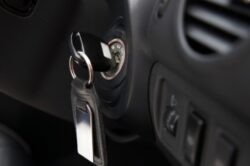The starter motor is an essential component in vehicle ignition systems. It is responsible for providing the initial spark of energy needed to start a car’s engine and keep it running.
This article will explore the role of the starter motor and how it contributes to ensuring a smooth and reliable driving experience. We’ll look at different types of starter motors, their features, functions, installation requirements, and maintenance needs.
Additionally, we’ll discuss common problems associated with starters and some ways that drivers can prevent them from occurring or fix them if they do occur. Ultimately, this article seeks to provide readers with a better understanding of the importance of the startor motor in vehicle ignition systems.
What Is a Starter Motor?
Source: www.ymfcarparts.co.uk
The starter motor is a crucial component in any vehicle ignition system. It is responsible for turning over the internal combustion engine that drives your car.
Without it, you simply won’t be able to start up and move. The starter motor works by converting electrical energy from the battery into mechanical energy which turns the crankshaft of the engine when you turn on your ignition key.
This process requires a series of components such as an armature, brushes, and solenoid switch among other parts all working together to accomplish this task with precision timing and efficiency. There are two types of starters commonly found in vehicles today: direct current (DC) or alternating current (AC).
Each type has its own set of advantages and disadvantages but both are essential for getting your car off to a good start!
How Does the Starter Motor Work?
The starter motor plays a critical role in vehicle ignition systems. It is responsible for turning the engine over and engaging it with the transmission, allowing the car to start.
The starter motor is typically located near the bottom of the engine and consists of three main components: an armature, a field coil, and brushes. When you turn your key or push your button to start your car, an electric current passes through these components which causes them to spin rapidly.
This motion creates enough force to engage a gear in the flywheel which turns over the crankshaft of your engine initiating combustion and starting up your vehicle’s internal combustion system. The complexity of this process requires advanced engineering so that all parts are properly aligned when they interact with each other during ignition; otherwise, starting would become difficult if not impossible.
Additionally, modern cars often have several additional safety features such as relays or solenoids installed between their starters and batteries that help protect against accidental damage due to excessive voltage fluctuations or short-circuiting conditions caused by worn wires or faulty connections.
Source: howacarworks.com
Benefits of Starter Motors
The starter motor plays an integral role in a vehicle’s ignition system. It is the component that initially sets the engine in motion, allowing drivers to power up their cars and hit the road.
The benefits of having a starter motor are numerous; from providing reliable starting power to reducing wear on other components, here are some of the key advantages:
- Improved Reliability: Starter motors provide consistent and reliable starting power time after time, making them hugely beneficial for everyday driving scenarios. This eliminates any potential headaches caused by failing to start your car due to low battery or dead alternator issues.
- Reduced Wear & Tear: As well as improving reliability, starter motors also help reduce wear on other components in a vehicle’s ignition system – such as spark plugs and distributor caps – by taking over most of the hard work of getting your car started each day.
- Cost Savings: By ensuring that all parts within an ignition system are operating optimally with minimal stress being placed upon them, you can save money on costly repairs down the line – something which is especially beneficial when it comes to older vehicles with high-mileage engines!
Conclusion
Source: repairsmith.com
The starter motor plays an integral role in vehicle ignition systems. It is responsible for providing the initial burst of energy needed to start a vehicle engine and has been used increasingly since its introduction in 1912.
Starter motors are capable of producing efficient and reliable power output while consuming minimal amounts of electricity, making them ideal components for modern vehicles. With advances in technology, starter motors continue to be improved upon and remain vital components for any car or truck with an internal combustion engine.
The importance of these devices cannot be overstated as their proper functioning ensures that vehicles can start without fail each time they are operated.




